Adorable, active, and really smart, the Schnoodle is one of the most talked-about designer dogs on the planet. A vast majority of them are small, making them the perfect lap dog as well as a therapy dog. For the few that can grow up to 76 pounds, they are nevertheless useful as a family dog or even a performance hound.
Featuring the clownish yet super-intelligent nature of the Poodle complete with its insatiable appetite for pleasing its human masters and combined with the fearless, sturdy, and very spirited nature of the Schnauzer, the Schnoodle is one pooch that will never tire of seeking your attention and infecting you with its insatiable appetite for fun and zesty life.
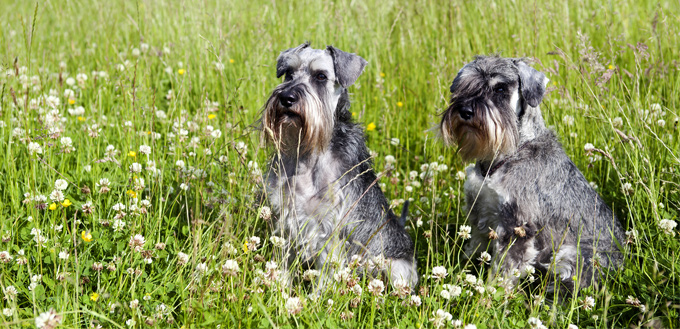
History of the Schnoodle
As for the history of this designer dog, no one knows exactly who first designed it although there is a reason to believe that it was first developed in the early parts of the 1980s. One thing is for sure, though, the art of crossbreeding is never an innovation; it has been around for many centuries long before we had a more scientific understanding of the complex processes involved in mixing different breeds.
Just look at the Doberman Pinscher, the Leonberger, the Affenpinscher, and the Brussels Griffon as well as other popular purebreds. These purebreds are actually crossbreeds. However, because of the constant improvements in their practices, breeders were able to come up with a very standardized breed with very minimal variation in their characteristics. This is the hallmark of a purebred. And since the Schnoodle can have a very wide-ranging set of characteristics across dogs, it may still take a while before it can be considered as a purebred of its own.
The Schnoodle was primarily intended for individuals who had pet dander allergies, giving them the opportunity to enjoy the company of these lovable and charming hounds. It’s a low-shedding dog that is perfect for individuals with allergies.
The great variance observed in Schnoodles is directly attributed to the different sizes of its parent breeds. For instance, the Schnauzer comes in 3 sizes – the Miniature, the Standard, and the Giant. As for the smart yet clownish Poodle, it also comes in 3 sizes – the Toy, the Miniature, and the Standard. These are differentiated by their height and weight characteristics. Crossbreeding one type of each breed can lead to a different result, depending on the combinations that the designer uses.
For instance, crossbreeding a Miniature Schnauzer with a Toy Poodle can lead to a really small Schnoodle. Mating a Miniature Schnauzer with a Miniature Poodle will create a medium-sized Schnoodle. What is very important to realize here is that the Poodle is slightly smaller than a Schnauzer with the Giant Schnauzer having a 3-inch height advantage over the maximum height of a Standard Poodle.
Now, why are we talking about the sizes or heights of these dogs anyway? Well, for obvious reasons, you don’t want to mate a smaller female with a larger male since doing so may lead to a difficult pregnancy. As such, you don’t mate a Toy Poodle with a Giant Schnauzer or vice versa. Besides, it is physically and naturally impossible owing to the height difference. Of course, you can always go for artificial insemination, but where’s the joy of procreation in that?
Who are the Parents?
The great variation in Schnoodles is directly related to the size variations in both its parents. This is actually what makes it a rather very interesting hybrid since there really is no way of telling how the Schnoodle will come out, given the number of parent combinations that a breeder has access to. Regardless of the parent combinations, however, one very critical component to becoming a pet parent of this hybrid is to understand its lineage.
Poodle
One of the best things about a Poodle is that it is a born entertainer. It never ceases to amaze anyone with its wit, but more importantly, with its clownish behavior. It never fails to draw smiles with its crazy antics. And if you’re thinking the Poodle is a four-legged member of the Three Stooges, you’d be surprised that it can actually be considered as the Einstein of its kingdom. Of course, fans of the Border Collie will readily dispute that.
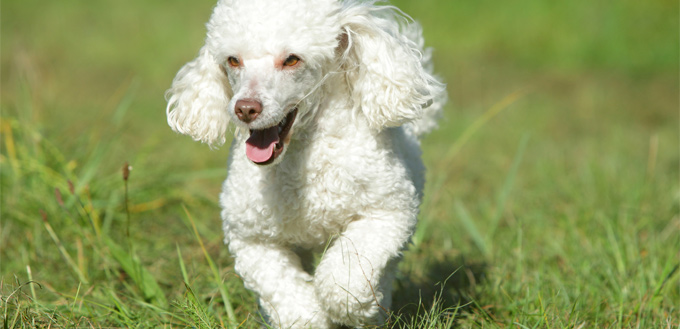
There is a controversy regarding its origins which actually stems from the fact that the Poodle is the favorite of King Louis XVI of France. This made it as the French national dog. Even popular media, especially in animated films, portray the Poodle as distinctly French. But scholars actually suggest that the Poodle is of German origin, owing its very name to the word “Pudel” from Pudelhund. The German Pudel was revered for its duck hunting abilities, a trait that is very strong even in today’s Standard Poodles.
The very first illustrations of what seemed to be a Poodle came from 15th-century drawings made by the German artist Albrecht Durer. In the 18th century, Francisco Goya of Spain also depicted the Poodle in many of his paintings. At about the same time, King Louis XVI pampered Toy Poodles like royalty.
The FCI says that the Poodle is a direct descendant of the French Barbet. Germany conceded to France as being the country of origin of the Poodle. This has stuck since then.
The Poodle comes in 3 sizes – Toy, Miniature, and Standard. The Toy Poodle can grow up to 10 inches tall while the Miniature can be anywhere between 11 and 15 inches in height. Any Poodle that is taller than 15 inches is automatically considered a Standard Poodle. The maximum height that a Standard Poodle can achieve is 22 inches, although it is possible that it can grow even taller. When it comes to its weight, the ranges are 5-10 pounds, 12-15 pounds, and 45-60 pounds for the Toy, Miniature, and Standard Poodles, respectively. Regardless of their size, the Poodle can live up to 18 years.
The Standard Poodle is officially recognized as the breed’s oldest, with the two other size classifications being nothing more than the product of man’s desire for a smaller version of the Poodle. The Standard Poodle is bred specifically for hunting and retrieving game fowls while the smaller Poodles are popular as circus dogs, although the Miniature Poodle can be highly valuable when hunting for truffles.
Prone to hypothyroidism, Addison’s disease, eye problems, and Cushing’s syndrome, the Poodle is nevertheless a bundle of joy. It is a very intelligent dog that can sometimes be interpreted as stubbornness. Newbie pet parents will have a difficult time keeping up with the IQ of this dog Einstein. As such, it is best reserved for those with a fair understanding of canine training.
The Poodle is a clear winner regardless of what type of competition you put it in. Whether it is agility, obedience, herding, or tracking, it always manages to bring home the plum. It is a perennial Best in Show awardee, a standout in circus performances, and a revered therapy and assistance dog.
You May Also Like: Dog Food for Poodles
Schnauzer
Fearless and alert with a remarkable intelligence that makes it easy to train, the Schnauzer has always been a great choice when it comes to a variety of roles. The Standard Schnauzer is originally a ratter, a watchful guard dog, and an obedient all-purpose hound. The Miniature Schnauzer, on the other hand, is more like Loki when it comes to mischief and stubbornness but will never fail to impress its human audience with its display of unique talents.
The Giant Schnauzer is also intelligent and smart, but its stubbornness can easily get in the way of its effective training. However, there is one thing going for the Giant that is greatly valued by any family who has learned to harness such size. The Giant will love to play with the human members of its pack and will fiercely defend them from any harm. Do understand, however, that the Schnauzer – from the Miniature to the Standard and the Giant – is never meant to be owned by first-time pet parents. Their level of intelligence is simply a huge obstacle for those who fail to recognize the correct way of training such hounds.
When it comes to sizes, the Miniature can be 12 to 14 inches tall while the Standard can stand anywhere between 17.5 and 19.5 inches. The Giant, on the other hand, can grow from 23.5 inches to 27.5 inches and weigh a staggering 65 to 90 pounds. The Standard weighs in at about 30-50 pounds while the Miniature tips the scale at 11 to 20 pounds. The Standard Schnauzer tends to live longer than the other two at 13 to 15 years. The Miniature follows at 12 to 14 years while the Giant comes dead last at 10 to 12 years.
The shedding level of the Schnauzer increases with its size, with the Miniature being the low-shedder while the Giant is more prone to shedding. However, when compared with other dogs, the Schnauzer still makes for a great pet for those with allergies.
Like the Poodle, the Schnauzer has a German origin with many literatures pointing to their description as early as the 14th century. However, it is worth noting that it wasn’t called as Schnauzer during this time; it was known as the wire-haired Pinscher. It was only in 1879 when the name “Schnauzer” was officially adopted.
The Standard Schnauzer is recognized as the first of the 3 classes of the breed. It shares a genetic link with the German Pinscher. The original Standard is actually a cross between a gray Wolf Spitz and a black German Poodle.
The Giant Schnauzer was bred in 17th century Swabia. It was also called the Munich Schnauzer. Like the Standard, the Giant is a cross among Great Danes, Boxers, German Shepherds, Dobermans, Rottweilers, Bouvier des Flandres, Standard Schnauzer, and Thuringian Shepherds. Now that’s a lot of breeds to individually take into consideration.
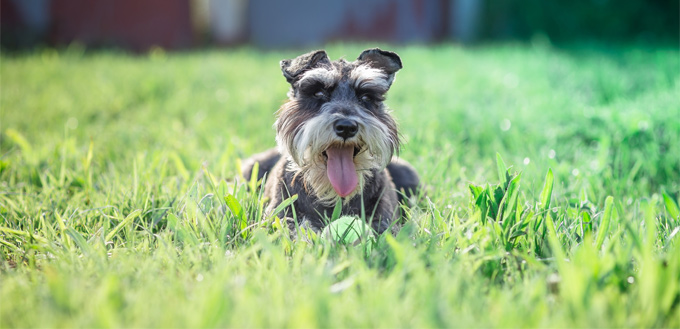
The Miniature is the latest Schnauzer to be developed, having been introduced only in the latter part of the 19th century. It is the product of crossing a Miniature Poodle or Affenpinscher with a Standard Schnauzer. Technically, there shouldn’t be any Schnoodle anymore since the Miniature Schnauzer is already a possible hybrid between a Poodle (Miniature) and a Schnauzer (Standard).
Miniature Schnauzers are prone to eye problems, blood disorders, kidney diseases, and heart conditions, among others. Standard Schnauzers are known for hip dysplasia, hypothyroidism, heart problems, and bladder stones while Giants are especially prone to eye problems, autoimmune diseases, and hip dysplasia.
You May Also Like: Dog Food for Miniature Schnauzers
Quick Facts
Depending on the type of Schnauzers and Poodles used in the crossbreeding process, you’ll definitely get something that is quite unexpected. But, that is actually the beauty of it, don’t you think? Although majority of the Schnoodles we see today are Toys and Miniatures, it is not uncommon to see Standards as well. Here’s what we know so far about the Schnoodle.
- A Toy Schnoodle can weigh anywhere between 6 and 10 pounds and grow from 10 to 12 inches at the shoulders
- A Miniature Schnoodle can have a height of between 12 and 15 inches and weigh about 13 to 20 pounds
- Standard Schnoodles will typically come in at a largely varied weight between 20 and 75 pounds while standing some 15 to 26 inches
- The Schnoodle can live anywhere from 13 years to a good 17 years
- Schnoodles are highly adaptable, affectionate, and remarkably great for small apartments; except, for the Standard Schnoodle
- The coat of a Schnoodle can be wiry or straight or curly and can take on the color of its parents
- They are considered low-shedders, releasing very few to no pet dander into the air; a great pet for allergy sufferers
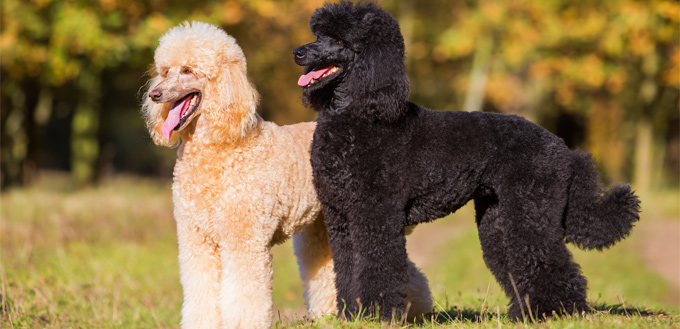
Things You Should Know
- Training
The moment you bring home a Schnoodle, you should already invest time and effort in training it. If you cannot commit to such a requirement, then get a professional to do it for you. The Schnoodle is intelligent; don’t ever doubt that. In fact, it could even be smarter than some pet parents. If it senses that it is smarter than you, oh boy you’re in for the biggest surprise of your life. The bundle of joy you thought will bring happiness in your existence can actually be a very headstrong, stubborn, and really annoying hound to control. It will be a daily tug-of-war. And believe us, the Schnoodle will always win.
Training should commence at once. Even if your Schnoodle is already an adult, don’t assume that it is already well-trained. How else did its previous owner give it up if it wasn’t really behaving ‘naughtily’?
Always use positive reinforcement techniques when training your Schnoodle. Persistence, patience, and consistency are the 3 main ingredients to the successful training of dogs. If you lack any of these qualities, you’re not really meant to be the pack leader of a Schnoodle or any other dog for that matter.
- Feeding
Don’t assume that you know how much to feed your Schnoodle based on its weight alone. There are other factors that need to be considered aside from body weight. Age and life stage are important considerations, too, with puppies, pregnant, and lactating Schnoodles requiring more food than adults and seniors. The same is true with their activity levels. If your Schnoodle is nothing more than an over-hyped lap dog, then you’d have to be careful about overfeeding it, unless your intention is to turn it into Garfield’s canine version.
Your best bet is always to consult with your vet. He will perform a thorough assessment of your pet and give you recommendations on the number of calories that it needs to eat. You can work your way from there.
- Exercise
Thirty to 60 minutes of daily brisk walking is often enough to keep your Schnoodle out of trouble. Exercise is a way for dogs to use their energy in more constructive ways; lest they use this by tearing your place down. Here’s a good rule of thumb to follow: the smaller the size of your dog the less exercise it needs. Don’t forget the mind games. Your Schnoodle is intelligent, but you should also harness this intelligence by engaging it in some puzzle and interactive games.
You May Also Like: Dog Puzzle Toys
- Socialization
While a Schnoodle naturally loves being around people and may not have issues with other dogs and pets, you’d have to show it how. This is where early puppy socialization can be very helpful. Give your puppy a chance to meet and interact with other people aside from those it usually sees in the house. Get your puppy to a dog park or any other place where it can interact with other dogs as well as other pets.
Because Schnoodles are attention-seekers, they are prone to separation anxiety as well. Destructive behaviors and barking tendencies can be a real nuisance to your neighbors especially if you live in an apartment complex.
- Grooming
True, the Schnoodle doesn’t shed as much as other dogs, whether purebred or hybrid. However, this doesn’t automatically exempt it from regular grooming. As a matter of fact, the average Schnoodle requires brushing and combing every 2 to 3 days if you don’t want its wavy or curly hair to get tangles and mats. They will also need regular visits to your dog groomer, although you can always do it on your own. Professional grooming can be scheduled every 4 to 6 weeks with bathing in between.
A more important matter is the daily washing of the Schnoodle’s face as it is prone to the formation of reddish-brown tear stains just under their eyes. If you don’t wash and clean your Schnoodle’s face on a daily basis, there’s a chance that the tear stains can become permanent and detract from the awesome good looks of your be-mustached four-legged friend.
Not only is tear staining a concern among Schnoodles. They are prone to develop urine and fecal stains as well. You don’t need your groomer to perform a bikini wax on your Schnoodle. However, having him trim the anal area and the genital area should help keep these regions clean and smelling fresh.
Nail-trimming is a standard weekly procedure while brushing the teeth should always be a daily regimen. If not, an every-other-day routine should suffice. Cleaning your dog’s ears is also important.
You May Also Like: Dog Ear Cleaners
- Health
The Schnoodle is not really your healthy hybrid. It’s also known for developing health problems such as cataracts, progressive retinal atrophy, patellar luxation, epilepsy, Legg-Calve-Perthes disease, diabetes mellitus, gastric torsion, and even Addison’s disease. It is often a good idea to ask the Schnoodle breeder about any inheritable diseases that the parent Schnauzer and Poodle may have had.
The Schnoodle is perfect for you if you:
- Have pet dander allergies, but would like to have a pet you can call your own
- Have more than a basic understanding and the actual application of the principles of puppy training and socialization
- Can commit to 30 minutes of daily exercise, at the very least
- Don’t mind the occasional barking tendencies of a Schnoodle
- Don’t mind cleaning and washing your pet’s face every single day
- Sadly, you’re not ready to be the pet parent of a Schnoodle if you:
- Don’t have any idea about basic dog training and socialization
- Don’t like cleaning and washing your pet’s face every day
- Have to leave your dog alone at home for extended periods of time
- Cannot commit at least half an hour for your dog’s daily exercise
- Don’t like barking that much
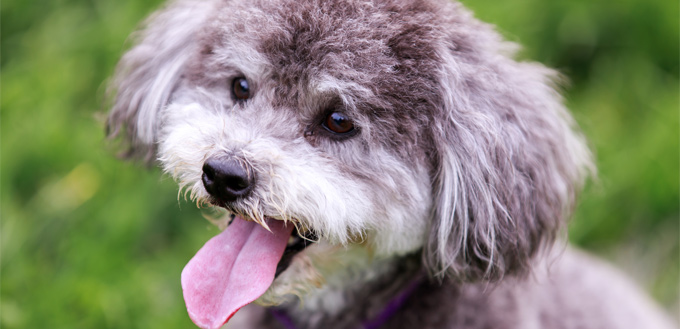
Temperament
A well-socialized and well-trained Schnoodle can be a wonderful, intelligent, loyal, and happy companion that absolutely loves having fun, complete with days filled with affection, play, and love. The Schnoodle is highly protective of its family and would love nothing more than become an active participant in everything that the family does. The Schnoodle may have the suspicious attitude of a terrier especially towards other people and other dogs, although this is not usually a problem if properly socialized. It may have a very strong temperament, but you can always count on the Schnoodle to be extremely loving and unquestionably loyal to its human pack.
The Schnoodle is funny and smart, charming and adorable. This makes it one of the best hybrids to bring home. Just be ready to be its pack leader, otherwise, it won’t hesitate to show you it’s the boss.
You may also like our mix breed guides on the: Pomchi, Pomsky and Shorkie Dog
More Pet Product Reviews
Tick Repellent for Dogs
Dog DNA Tests
Flea Treatments for Dogs
Flea Collars for Dogs
Dewormers For Dogs
Essential Oils for Fleas
Flea Carpet Spray & Powders
CBD Hemp Oil for Dogs
Paw Protection Waxes For Dogs
Liquid Bandage for Dogs
Sources:
- Schnoodle, Vetstreet







